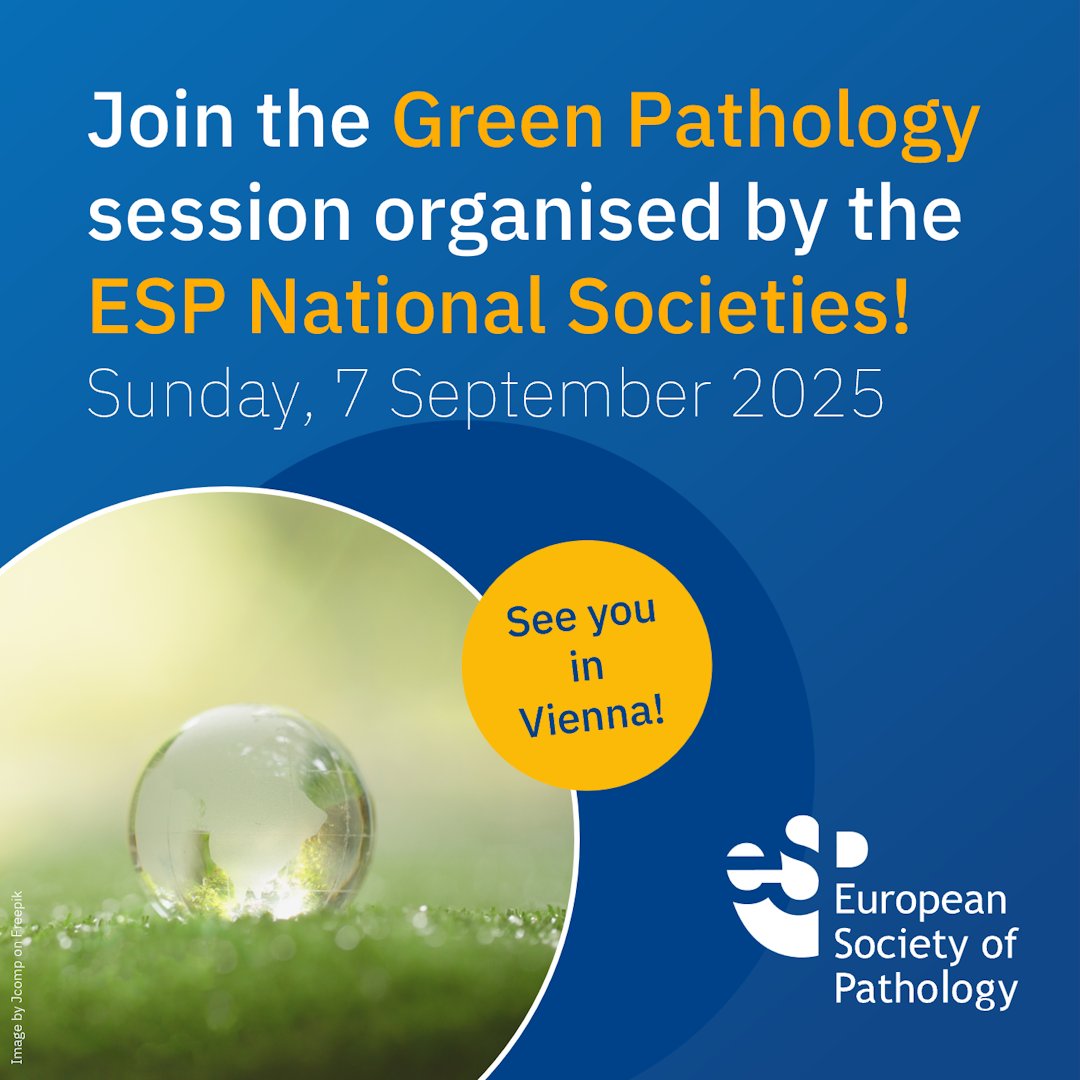
European Society of Pathology (ESP)
@ESP_Pathology
The leading force in European Pathology VIAR is the ESP Official Journal The European Congress of Pathology is organised by ESP #ESPCongress #EveryDayPathology
🔬 From the proximal colon: a sessile serrated lesion with unusual perineural-like stromal changes. 🔍A reminder that even subtle details can matter in daily diagnostics! Prof. Irene Gullo, Pathologist & #ESPAlumni, Portugal #EveryDayPathology #PathX

Hey...join it, join us...a valid reason to run...and enjoy our friendship. This is ll be another even more spectacular ESP.
🏃Path to Fight Cancer - Morning Run! During #ESPCongress, we are organising a run for #cancer awareness! This is a motivating and fun event taking place on Monday, 8 September 2025 at 7:00 am in Donaupark, Vienna. Info is available via this link:espcongress.org/ecp-run/ #pathX
🏃Path to Fight Cancer - Morning Run! During #ESPCongress, we are organising a run for #cancer awareness! This is a motivating and fun event taking place on Monday, 8 September 2025 at 7:00 am in Donaupark, Vienna. Info is available via this link:espcongress.org/ecp-run/ #pathX

Progress in #Medicine should come along with environmental consciousness. ESP is proud to announce a session during #ESPCongress Vienna for Green #pathology! To see the programme and speakers list, visit: ecp2025.abstractserver.com/programme/#/sc… Join us in Vienna or online! #pathX #PathTwitter

Virchows Archiv reports six cases of adnexal neoplasms with follicular differentiation featuring YAP1::MAML2, YAP1::NUTM1, or RNF13::PAK2 fusion transcripts. These findings expand the understanding of oncogenic drivers in these tumors. bit.ly/3TRC8QG
Among the 24 labs passing initial controls, 20.83% exhibited over-staining and 8.33% under-staining in BRAF IHC tests. The study emphasizes the importance of consistent staining quality to reduce false-negative results in cancer diagnostics. bit.ly/44SkroZ
The study introduces a new methylation cluster not included in the Heidelberg Sarcoma Classifier, enhancing the understanding of intranodal palisaded myofibroblastomas and their diagnostic challenges through molecular profiling. #VirchowsArchiv bit.ly/4lXATes
Expert consensus in Virchows Archiv provides a framework for regulatory agencies on validating predictive and prognostic biomarkers in oncology, addressing the complexities of transferring laboratory developed tests to clinical practice. bit.ly/4m8axXn
A retrospective analysis in Virchows Archiv reveals that nodular BCC is the most common subtype in penoscrotal cases. The study highlights risk factors such as tobacco use and chronic kidney disease, contributing to better awareness and management. bit.ly/4o0Ahqe
Research published in Virchows Archiv on 154 PitNET samples reveals that gonadotroph tumors are the most prevalent subtype. The study highlights a notable loss of PTEN expression in lactotroph tumors, linking it to potential tumorigenesis mechanisms. bit.ly/416f7x8
Virchows Archiv reports on 11 cases of composite gangliocytoma/neuroma and neuroendocrine tumors (CoGNET) in the ampulla and duodenum, highlighting their triphasic structure and unique immunohistochemical profiles. bit.ly/4eRaPPW
A study highlights the connection between DICER1-related tumor predisposition and desmoid fibromatosis in a pediatric patient. The presence of a CTNNB1 mutation suggests altered WNT pathway signaling in tumor formation. bit.ly/4eVRcX8
A rare case of EHE was identified in a 78-year-old patient, featuring an unusual RREB1::TFE3 gene fusion. The tumor displayed atypical histological characteristics, contributing to the understanding of EHE's molecular diversity. bit.ly/3IwTa45
Virchows Archiv discusses the complexities of diagnosing Castleman disease, particularly in cases associated with KSHV/HHV8. The integration of clinical, laboratory, and molecular data is essential to differentiate CD from other mimicking disorders. bit.ly/3TLfadN
The study highlights the need for statistical justification in point assignments for histological variables. Future iterations could benefit from data-driven classifications and thorough model calibration to enhance clinical applicability. bit.ly/3IAjKt2
Analysis of 105 liver cancer samples shows that cHCC-CCA tumors express higher levels of NOTCH1 and its targets compared to hepatocellular carcinoma and cholangiocarcinoma, indicating potential biomarkers for classification and treatment. bit.ly/3Is5ZwD #VirchowsArchiv
Virchows Archiv reports that in membranous lupus nephritis, positivity for exostosin 1/2 (EXT) correlates with a lower chronicity index at first biopsy and reduced risk of end-stage kidney disease compared to EXT-negative patients. bit.ly/4kHhg9y
The study found that ODC1 positivity was confirmed in 23.8% of penile squamous cell carcinoma tumors, all of which were HPV-independent. This highlights ODC1's potential as a prognostic biomarker in cancer treatment. bit.ly/3UdOHFT #VirchowsArchiv
This letter highlights that SCAD diagnosis relies on endoscopic findings and histological features. Concerns arise over the superficial histological assessment and the absence of a detailed biopsy protocol, which is crucial for accurate diagnosis. bit.ly/44N6SHj
Virchows Archiv reports on five rare cases of small cell carcinoma of the urinary bladder with rhabdomyosarcomatous differentiation. All patients were adult males, presenting with hematuria and solitary exophytic masses averaging 2.9 cm. bit.ly/40idOeq